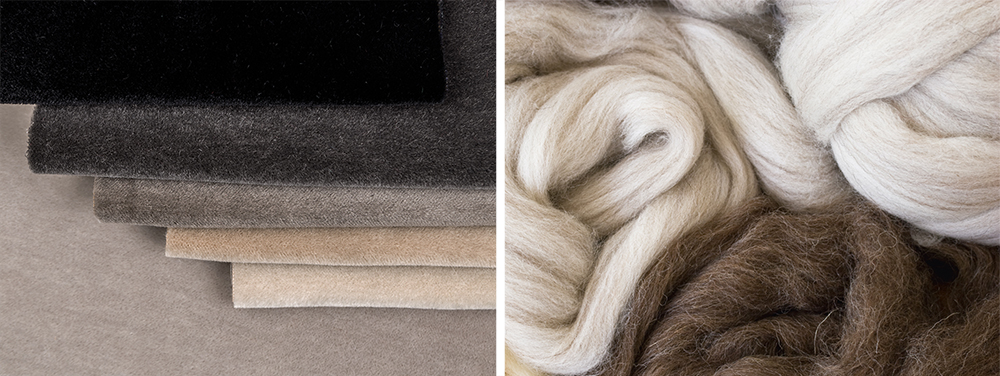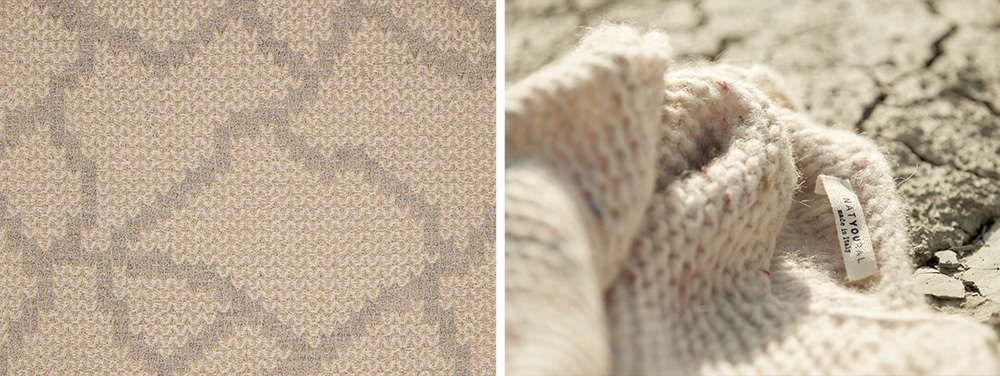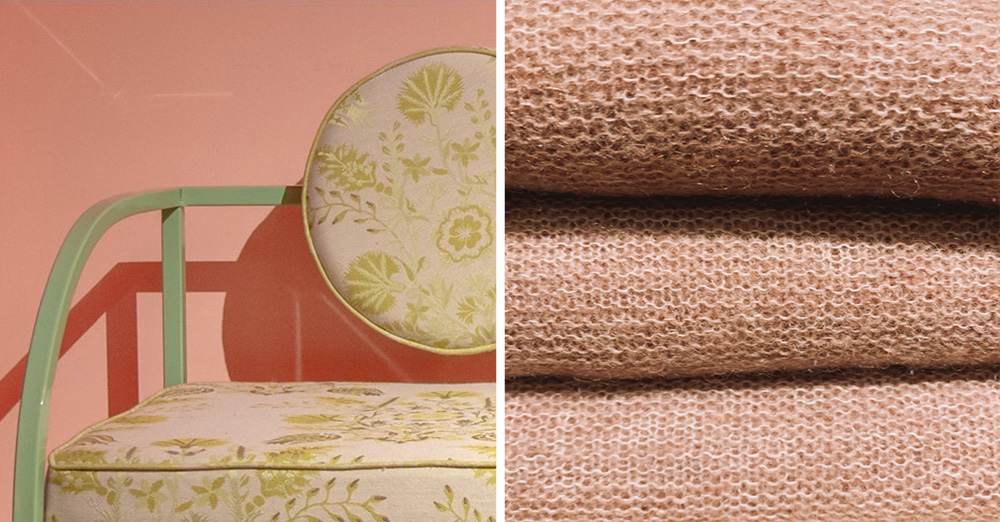The perfect yarn for furnishing textile which respect the human being and the environment

Wool has always been considered a precious fibre to create exclusive textile for interiors. Not only for its aesthetic and technical characteristics, but also for the unique advantages it offers when on contact with the skin and for the ecological advantages, thus wool is also a natural renewable fibre.
A little bit of History As for linen, there are many historical references of the use of wool which go back to the prehistoric era. Referring to more recent times, already the Mesopotamian population in 3000 BC. used to weave wool whilst the Romans invented the shear for shearing the animals and the first basic working techniques.
Talking about the fibre The wool fibre can have different origins, but the making process start always in the same way: shearing, washing and scouring. Shearing happens normally in spring time when the animal fur has maximum softness and shininess. Washing and scouring are the following phases of the process, which have the function to wash away any impurity and substances present. At this point we will have a fibre with a more or less defined colour which will depend on the animal sheared that will vary from white-ivory tones to brown or even black. The next step will be to roll up the wool material that will be further worked by the woollen mill which will transform the row woolpacks in spools of soft combed textile yarn (long fibers). Now the yarn, after all these passages will have a shining aspect. The last phases will be the dyeing and finishing processes.
As mentioned, the wool can be sheared from different animals like sheep, goats, lamas, camels, rabbits and dromedaries. As a reminder, the Merino wool derive from a Merinos sheep, whilst the Mohair derives form an Angora goat.
For example, l’Opificio use Merino wool in
the Cottage Collection. Mohair wool in
the Velluto Kid Mohair. and Pure Virgin Wool in
the collections Refuge. and
Nord. . Finally, it is important to know that the
sheep wool, thanks to its thickness and its curl characteristic, when transformed in felt, it is used also in the construction sector as
thermic and acoustic isolation. In fact, it fulfils the function of humidity and temperature regulator as well as acoustic damper.
Technical characteristics A characteristic of the wool thread is the
richness in keratin that can reach a length of up to 350mm. Another fundamental feature is the composition of the fibre structure which makes the yarn particularly interesting as it is: extremely
elastic, extremely
soft, has a very
high thermal seal, an important
hygroscopic characteristic and a very
high resistance to the flame, specifically in this respect it
barely takes fire and when it happens it burns itself out, when it burns it develops
small quantities of smoke and little heat, doesn’t drip and because of its high resistance to the flame it
carbonize rapidly. This last feature, added to the
beauty, shininess and durability makes this yarn particularly interesting for
contract interiors. A final feature that set the difference from other threads is its
resistance to mould, in fact it almost avoids its development.

The freshness of Wool Wool has a further important characteristic that to guarantee a perfect comfort: it is warm when cold, and fresh when hot, thanks to its hygroscopic feature. Exactly for this reason it is used in the cold countries, which is quite predictable, but also in the warm countries, this latter less predictable, as in Africa. Nomad people (Tuareg) use wool cloths to protect from the heat and the cold of the desert. Wool is a noble thread that guarantess wellness to the individual.
Wool is biodegradable Wool is a natural resource that naturally returns to nature. The most recent studies demonstrate that the natural wool as well as the treated one, can be washed in the washing machine and, compared with synthetic fibres, decompose easily. Wool decomposes in soil in a matter of 3-4 months thank to its keratin component – a natural protein – and to the action of living micro-organism. At this point, the wool will release essential elements as nitrogen, sulphur and magnesium becoming a natural slow-transfer fertilizing. If we compare a product made of wool with one made of polyester pile, the second will produce – during a washing - up to 1900 micro-fibre which contribute to the creation of up to 30% of the microplastic present in the ocean, elements that are especially dangerous for the animal and human food chain.
Wool at the center of the farmer circular economy Wool is a perfect example of a sustainable circular economy since millennia. In fact, sheep contribute to the conservation of the environment thank to the grazing, the wool – their fur – is a renewable resource, its manufacturing process requires much less water than the process for another natural fibre as cotton, and at the end of its life it is totally decomposed in about 3-4 months becoming a natural fertilizing for the soil. It is a complete virtuous cycle.
To choose a wool velvet or jacquard fabric for interiors means to pay the outmost attention to the wellbeing of the individual and of our planet.

l’Opificio propose various collections with wool as il Velluto di KidMohair and il Velluto di Alpaca, the Cottage collections, the Nord Collection and the Refuge collections. The thread used originated in South Africa for the Mohair and Australia for the Merinos come from certified farm animals, which guarantee to full respecting the animals.
Photo Credit @oscalito1936 | @natyoural.it |@ilariacorticelli


